Cemetery Searches
November 2011: Discovery Kingsley Plantation Slave Cemetery
November 13, 2011 by ramona
Filed under Articles, Cemetery Searches, Genealogy Cemetery Searches, Genealogy Records 101
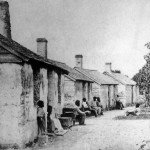 The rare discovery of a 19th century slave cemetery was made in the summer of 2010 by University of Florida anthropologist James Davidson. The site containing the skeletal remains of six individuals was found on the Kingsley Plantation, Fort George Island, Jacksonville Florida; home to the Timucuan Ecological and Historic Preserve. Working with the University of Florida’s archeological field school, Davidson, who led the expedition says,
The rare discovery of a 19th century slave cemetery was made in the summer of 2010 by University of Florida anthropologist James Davidson. The site containing the skeletal remains of six individuals was found on the Kingsley Plantation, Fort George Island, Jacksonville Florida; home to the Timucuan Ecological and Historic Preserve. Working with the University of Florida’s archeological field school, Davidson, who led the expedition says,
“We didn’t stumble over this by accident like so many of these discoveries, we had reason to believe this was here for a long time.”
The clues that led to discovery
Study of the Kingsley plantation began as early as 1968 by former University of Florida professor Dr. Charles Fairbanks, who conducted an excavation of a slave cabin on the site. Continuing this work, Davidson, following century old leads that depicted the site as being in close proximity to an old oak tree, found the site located slightly off the main road leading to the plantation house. Nearby were the remains of the old slave quarters. Several clues including square cut nails and a number of buttons helped establish a date for the burials. Osteological measurements (measurements of bones) indicated that the remains were of African descent, validating the authenticity of the site.
The remains
Of the remains discovered, there were three children, a woman of approximately 60 years old, a man of approximately 40 years old and a sixth body whose age and gender could not be determined. Out of respect for the dead all artifacts will remain at the site and will not be removed to another location.
Why this is important
Often buried without ceremony, with no grave markers left to characterize the lives of slaves or denote their passing. Archeological finds of this magnitude may give slaves and their descendants some resolution, in addition to well deserved acknowledgement. Although announcements of the discovery were suspended to permit further research and allow for the possibility of finding descendants; in this instance there is no way to identify the remains. No documentation has been found that could lead to the identification of living relatives.
Conclusion
Dr. Johnetta Cole, a descendant of the Kingsley family and director of the Smithsonian Institution’s National Museum of African Art, speaking in a press conference about the discovery states,
“My ancestral roots are so deeply planted in this place, you can’t know where you’re going if you don’t know where you’ve been. This discovery of an African burial ground, a burial ground of enslaved people, helps us to understand where all of us have been and now where and how we can go forward.”
Duane Allman & Berry Oakley Graves at Rose Hill Cemetery
April 17, 2011 by Chris
Filed under Articles, Cemetery Searches
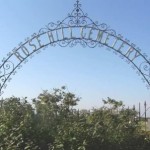 I just published a post at my Rose Hill Cemetery; Macon, Georgia blog I think some of you might enjoy. And the Road Goes on Forever: Duane Allman & Berry Oakley is now live.
I just published a post at my Rose Hill Cemetery; Macon, Georgia blog I think some of you might enjoy. And the Road Goes on Forever: Duane Allman & Berry Oakley is now live.
(This posting is from Southern Graves. Click the link to view the full article from its original source.)
What To Ask The Crypt Keeper – Genealogy Research at Graveyards
November 7, 2009 by Chris
Filed under Articles, Cemetery Searches, Genealogy Cemetery Searches, Genealogy Records 101
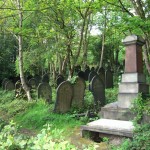 Some people have asked me about gravestone photos. We received a couple of emails on that, so I thought it would be helpful to write a little about the role of graveyards in your genealogy research. They are critical! As you get your hands on death certificates or even learn more about where your ancestors lived, you’ll be able to consult the local graveyards to find information on spouses, birth dates, and other family members. Keep in mind that in many cases, families are buried together (sometimes for several generations). This was truer for our ancestors than it is for us today. People didn’t travel as they do today.
Some people have asked me about gravestone photos. We received a couple of emails on that, so I thought it would be helpful to write a little about the role of graveyards in your genealogy research. They are critical! As you get your hands on death certificates or even learn more about where your ancestors lived, you’ll be able to consult the local graveyards to find information on spouses, birth dates, and other family members. Keep in mind that in many cases, families are buried together (sometimes for several generations). This was truer for our ancestors than it is for us today. People didn’t travel as they do today.
Our past generations tended to live in the same area. This makes graveyards a great resource. Also remember that many graveyards are denomination specific. Don’t waste time looking for a Catholic ancestor in a Protestant graveyard.
Genealogy Trees | The Role of Cemeteries
December 31, 2008 by Chris
Filed under Articles, Cemetery Searches, Genealogy Cemetery Searches, Genealogy Records 101
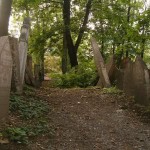 As regular readers of this site you know I’m a big fan of making sure cemetery research is a method used for researching your genealogy and family trees. Below is an example from Southern Graves (see link below for original post) on how we can find our past generations using cemetery search methods.
As regular readers of this site you know I’m a big fan of making sure cemetery research is a method used for researching your genealogy and family trees. Below is an example from Southern Graves (see link below for original post) on how we can find our past generations using cemetery search methods.
The author of the original post writes…
Mrs. Eliza B. R. Mendenhall died almost 160 years ago on December 29, 1848. She was 67 years of age at the time of her death, so her birth year was about 1781. She, along with her infant grandson John Bruce Limehouse, was interred in St. Philip’s Church Cemetery; Charleston, South Carolina.
I love the wording on this stone. In case you cannot read it via the photo, here is a transcription:
This marble marks the spot where repose
the remains of
Mrs. Eliza B. R. Mendenhall,
Who closed her earthly career on the 29th December A.D. 1848,
aged 67 years.
By her side sleeps her infant
grandson
John Bruce Limehouse.
“Thou art gone to the grave, but we will
not deplore thee
whose God was thy ransom, they Guardian
and Guide.
He gave thee, He took thee
and He will restore thee,
and death has no sting for the
Savior hath died.”
This stone is consecrated
to a beloved mother
by her daughter.
(This posting is from Southern Graves. Click the link to view the full article from its original source.)
As you can see from the transcription, there is a wealth of information to help us complete our family trees. Grave stones typically contain extensive records of birth and death dates. They also often cite family members.
By doing the math on age and date of death you can get the date of birth. While not cited here, you sometimes can discover where someone lived from a grave stone as well, which can lead to a local government office and a copy of a birth certificate (which, as you know, will reveal the parents and thus the next generation.)
Don’t overlook cemeteries in our work to build out your genealogy trees. They will save you a ton of time.
…
Where to Next?
Blank Family Tree with Step-by-Step Instructions
…
Making A Family Tree – Graveyard Rabbits
December 11, 2008 by Chris
Filed under Articles, Cemetery Searches, Genealogy Cemetery Searches, Genealogy Records 101
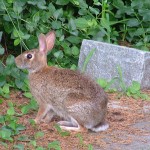 Making a family tree is never an easy undertaking. There are a lot of things to figure out and organize. However, regardless of where you are in the process of making your family tree you’ll find that knowing a bit about researching graveyards will make a huge difference. Today, I’d like to reference the works -as I’ve done often before – of Southern Graves who provides a great little story about the Graveyard Rabbit that I’m sure you’ll enjoy.
Making a family tree is never an easy undertaking. There are a lot of things to figure out and organize. However, regardless of where you are in the process of making your family tree you’ll find that knowing a bit about researching graveyards will make a huge difference. Today, I’d like to reference the works -as I’ve done often before – of Southern Graves who provides a great little story about the Graveyard Rabbit that I’m sure you’ll enjoy.
By way of introduction, the author writes:
My nickname in high school was “squirrel,” but it turns out I am really a rabbit. A Graveyard Rabbit, that is.
If you haven’t noticed the new statement in the heading, I am a charter member of The Association of Graveyard Rabbits. This group was founded by Terry Thornton, and she writes all about the name at her new The Graveyard Rabbit of the Hill Country blog. The short of it is the name came from a poem entitled The Graveyard Rabbit by Frank Lebby Stanton. My favorite lines of the poem are in the very beginning.
In the white moonlight, where the willow waves,
He halfway gallops among the graves –
A tiny ghost in the gloom and gleam,
content to dwell where the dead men dream…
This definitely describes my passion for cemeteries and the histories they share. Let’s break it down:
“In the white moonlight, where the willow waves”
I don’t visit cemeteries at night too much, only because it’s hard to read the stones and take pictures then! However, there are often live willows waving when I visit, as well as many stone willows standing tall.
“He halfway gallops among the graves”
At the risk of sounding silly, if I’m at a Cemetery I’ve never visited before, I often do the same thing! I go from stone to stone, in no kind of pattern, just to get a feel of the place. Plus, an interesting monument from afar gets my interest and I must check it out. I have to make myself at some point stop and systematically go through the graves for proper transcription, photographs, and to begin to get the full history of the Cemetery and those interred.
“A tiny ghost in the gloom and gleam”
I and my visit are but a tiny speck of the whole history of most cemeteries. Especially those that have been around for hundreds of years. There have been many visitors before me, and there will be many after me.
“Content to dwell where the dead men dream”
That statement is a simple fact that applies to me. I am very content walking among the headstones, reading them, photographing them, and learning from them.
I hope you will continue to join me on my journey through the cemeteries of the southern United States at the Southern Graves site and this Southern Graves blog.
Really great stuff, wouldn’t you agree? This is the type of story that makes genealogy and family history research so much fun. Sure, there is the process of hunting down certificates, finding dates and dealing with name changes but then there is also the rich history of the past written in stone. Grave Yard Rabbits are truly a wonderful group who I’m sure we will be revisiting in the future.
(This posting is from Southern Graves.)
…
Where to Next?
…
St. Andrew’s Cemetery; Darien, Georgia
September 17, 2008 by Chris
Filed under Articles, Cemetery Searches, Genealogy Cemetery Searches, Genealogy Records 101
 The poetic inscription at the beginning of this article about St. Andrew’s Church Cemetery in Darien, McIntosh County, Georgia, reads:
The poetic inscription at the beginning of this article about St. Andrew’s Church Cemetery in Darien, McIntosh County, Georgia, reads:
“At the end of this avenue, on high land overlooking the creeks and marshes, Thomas Spalding of Sapelo established his family burial ground.”
This short article is part of the Historical Marker Database recently uploaded from Southern Graves, a website dedicated to the history, research and preservation of Southern U.S. cemeteries and burial sites large and small.
The site contains Southern cemetery listings, directories, and a broad and wondrous selection of articles; from the humorous to the heartfelt and beyond. The site also contains a link to a remarkable must read Blog filled with winning and always interesting subject matter.
This site is not only a treasure to genealogists but should be commended for the spirit in which it is presented, respectful, yet full of the human experience.
A must read for all! Beautifully done!
I highly recommend a visit to Southern Graves Home.
…
Where to Next?
…
Facebook for the Dead?
September 11, 2008 by Chris
Filed under Articles, Cemetery Searches, Genealogy Cemetery Searches, Genealogy Records 101
A press release from 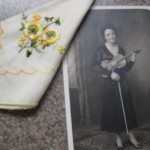 explains how, and why, Footnote.com takes social networking into the past. When a loved one is lost, friends and family members experience a range of emotions from sorrow and grief to comfort. Often, this leads to sharing stories and memories. Until now, it has been a challenge to find a place where these stories can come together to easily be shared, preserved and enriched. At Footnote.com, anyone can create or find Footnote Pages, a space where users can connect and share information, photos and stories about people important to them.
explains how, and why, Footnote.com takes social networking into the past. When a loved one is lost, friends and family members experience a range of emotions from sorrow and grief to comfort. Often, this leads to sharing stories and memories. Until now, it has been a challenge to find a place where these stories can come together to easily be shared, preserved and enriched. At Footnote.com, anyone can create or find Footnote Pages, a space where users can connect and share information, photos and stories about people important to them.
To celebrate the new Footnote Pages, Footnote.com created over 80 million pages from the data in the SSDI. These pages feature an interactive timeline, map, photo gallery, and many other tools which has led some to refer to Footnote Pages as the Facebook for the Deceased.
Read the full press release at the Footnote Press Room, or visit the Footnote Blog.
…
Where to Next?
…
Searching Cemeteries – Genealogy Tip
September 7, 2008 by Chris
Filed under Articles, Cemetery Searches, Genealogy Cemetery Searches, Genealogy Records 101
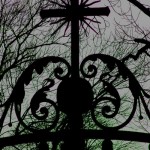 Here is a s quick genealogy tip for searching cemeteries. Sometimes the obvious isn’t all that apparent. Remember that in past centuries, almost all people were buried according to ethnic origin or religious affiliation.
Here is a s quick genealogy tip for searching cemeteries. Sometimes the obvious isn’t all that apparent. Remember that in past centuries, almost all people were buried according to ethnic origin or religious affiliation.
So, the tip is: don’t waste your time looking in a Presbyterian cemetery for a Catholic ancestor. Sounds obvious now that I’ve said it, but it is such an easy (and frustrating) mistake to make.
Take care.
…
Where to Next?
…
Searching Cemetery Monument Foundations
February 9, 2008 by Chris
Filed under Articles, Cemetery Searches, Genealogy Cemetery Searches, Genealogy Records 101
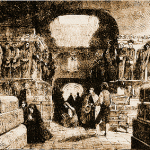 This book will intrigue anyone involved in serious genealogical research, posing a whole new way to uncover family roots and facts through research into cemeteries and their contents. This book has all kinds of great information from funeral art to conducting cemetery surveys. The author, Sharon Debartolo Carmack, covers how to access and interpret death certificates, obituaries, coroner’s records, wills, memorial and prayer cards, funeral home records, and mortality schedules. She also outlines the process of locating individual graves and elusive cemteries.
This book will intrigue anyone involved in serious genealogical research, posing a whole new way to uncover family roots and facts through research into cemeteries and their contents. This book has all kinds of great information from funeral art to conducting cemetery surveys. The author, Sharon Debartolo Carmack, covers how to access and interpret death certificates, obituaries, coroner’s records, wills, memorial and prayer cards, funeral home records, and mortality schedules. She also outlines the process of locating individual graves and elusive cemteries.
You can read more about this guide on Amazon.com:
Your Guide to Cemetery Research
…
Where to Next?
…
